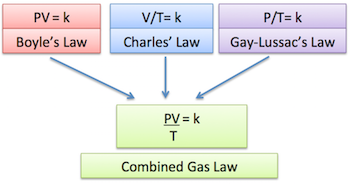Avogadro’s number, number of units in one mole of any substance (defined as its molecular weight in grams), equal to 6.02214076 × 10 23. The units may be electrons, atoms, ions, or molecules, depending on the nature of the substance and the character of the reaction (if any).See alsoAvogadro’s law. Ethics Sociology Social Science. Making a Medical Face Mask at Home Staff members reviewed the process of making and comfort of wearing several homemade face mask designs. Updated 10 August 2020 Art Virology. Illuminating the Micro-World to Understand Viral Infections. Amedeo Avogadro is best known for his hypothesis that equal volumes of different gases contain an equal number of molecules, provided they are at the same temperature and pressure. His hypothesis was rejected by other scientists. It only gained acceptance after his death. It is now called Avogadro’s law. Amedeo Avogadro Biography: The Italian scientist, Amedeo Avogadro is most famous for his contributions to the theory of moles and molecular weight, including what is known as the Avogadro s law. In respect of his contributions to the molecular theory, the number of molecules in one mole was renamed the Avogadro’s Number. For the Avogadro within Call of Duty: Mobile, see Avogadro (Mobile). Did you really think you could contain me? You only made me stronger!! Cornelius Pernell was a mortal name. It cannot encompass what I have become. If you must call me something before I destroy you all - call me Avogadro.Cornelius Pernell as Avogadro in Alpha Omega Cornelius Pernell (also known as Avogadro) is a character.

Lorenzo Romano Amedeo Carlo Avogadro (August 9, 1776 to July 9, 1856) Avogadro is famous for Avogadro’s Law, which states that two gases of equal volume at the same temperature and pressure contain an equal number of molecules. In honor of him, the number of molecules in a mole of a substance is called Avogadro’s number. Avogadro, who was of noble birth, obtained a degree in ecclesiastical law and started practice in that field, before deciding to pursue a scientific career. At that time, the existence of atoms and molecules was still hypothetical and very controversial. Experiments of Joseph Gay-Lussac had shown that gases reacted in simple integer ratios of volumes. For example, when two liters of hydrogen gas reacted with one liter of oxygen gas two liters of water vapor were produced. Avogadro correctly interpreted these results in terms of his hypothesis that equal volumes of gas contain equal numbers of molecules. For example, the reaction of hydrogen and oxygen can be understood, if hydrogen and oxygen molecules are diatomic, as resulting from this molecular reaction: 2H2 + O2 → 2 H2O. Avogadro’s work was largely ignored during his lifetime but became known shortly after his death and eventually his ideas were shown to be correct. Little is known about Avogadro’s private life, but his obituary in the Gazzetta Piemontese nine days after his death says that he was “religioso senza intolleranza, dotto senza pedanteria” (“religious without intolerance, learned without pedantry”).
The contributions of the Italian chemist Amedeo Avogadro (1776–1856) relate to the work of two of his contemporaries, Joseph Louis Gay-Lussac and John Dalton. Gay-Lussac’s law of combining volumes (1808) stated that when two gases react, the volumes of the reactants and products—if gases—are in whole number ratios. This law tended to support Dalton’s atomic theory, but Dalton rejected Gay-Lussac’s work. Avogadro, however, saw it as the key to a better understanding of molecular constituency.In 1811 Avogadro hypothesized that equal volumes of gases at the same temperature and pressure contain equal numbers of molecules. From this hypothesis it followed that relative molecular weights of any two gases are the same as the ratio of the densities of the two gases under the same conditions of temperature and pressure. Avogadro also astutely reasoned that simple gases were not formed of solitary atoms but were instead compound molecules of two or more atoms. (Avogadro did not actually use the word atom; at the time the words atom andmolecule were used almost interchangeably. He talked about three kinds of “molecules,” including an “elementary molecule”—what we would call an atom.) Thus Avogadro was able to overcome the difficulty that Dalton and others had encountered when Gay-Lussac reported that above 100oC the volume of water vapor was twice the volume of the oxygen used to form it. According to Avogadro, the molecule of oxygen had split into two atoms in the course of forming water vapor.
What Did Avogadro Discover
Curiously, Avogadro’s hypothesis was neglected for half a century after it was first published. Many reasons for this neglect have been cited, including some theoretical problems, such asJöns Jakob Berzelius’s “dualism,” which asserted that compounds are held together by the attraction of positive and negative electrical charges, making it inconceivable that a molecule composed of two electrically similar atoms—as in oxygen—could exist. In addition, Avogadro was not part of an active community of chemists: the Italy of his day was far from the centers of chemistry in France, Germany, England, and Sweden, where Berzelius was based.

Avogadro Scientist

Avogadro was a native of Turin, where his father, Count Filippo Avogadro, was a lawyer and government leader in the Piedmont (Italy was then still divided into independent countries). Avogadro succeeded to his father’s title, earned degrees in law, and began to practice as an ecclesiastical lawyer. After obtaining his formal degrees, he took private lessons in mathematics and sciences, including chemistry. For much of his career as a chemist he held the chair of physical chemistry at the University of Turin.
Resource:

